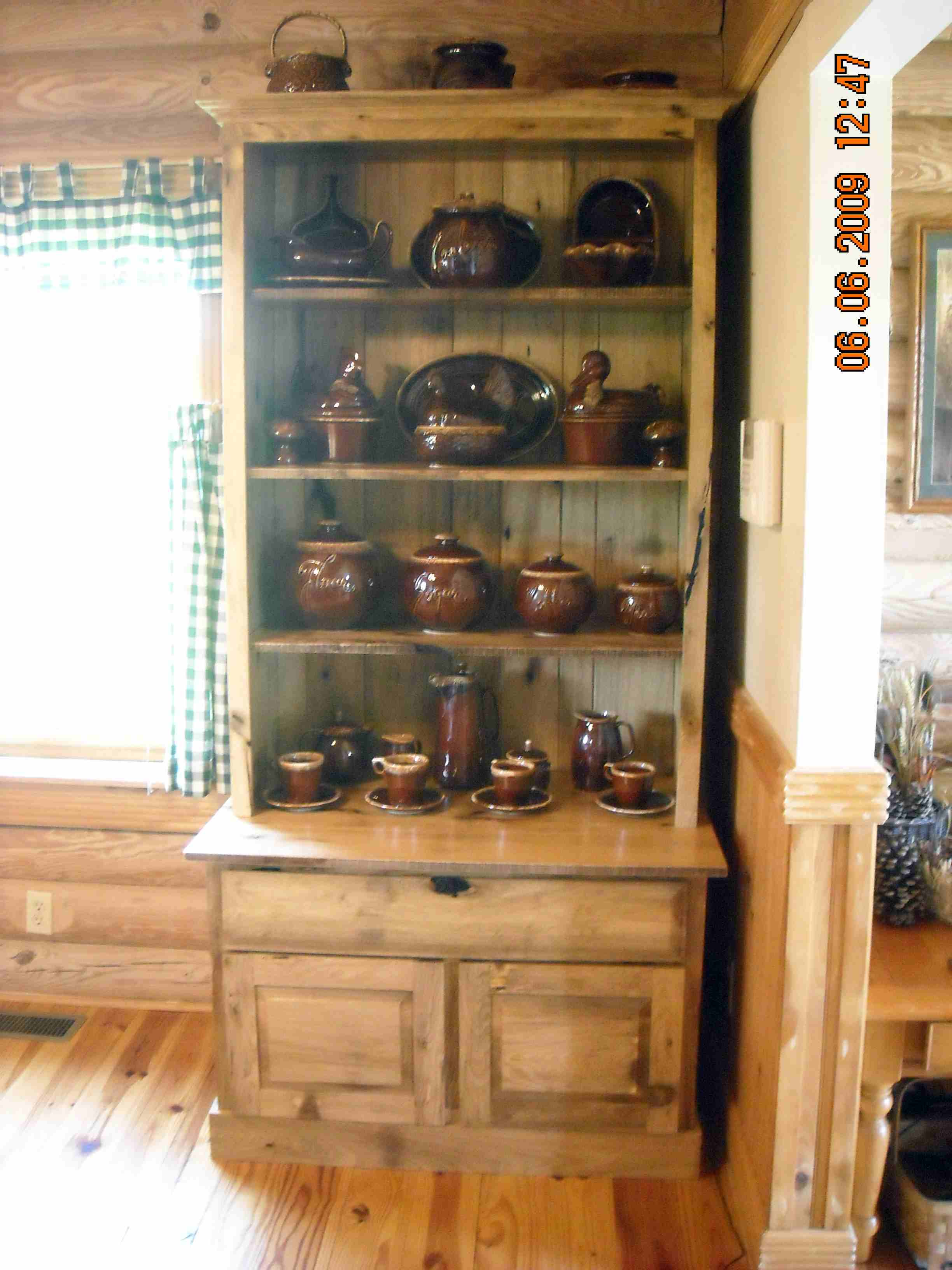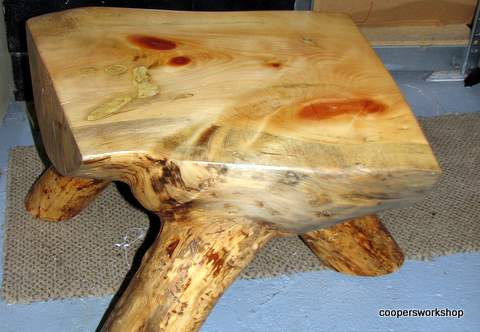Dealing with Insects in Furniture
Advice on heat-treating a Persimmon hutch that is being attacked by beetles. February 14, 2010
Question
I built and delivered a wormy persimmon hutch for a customer last week. The customer provided the lumber which was supposed to be kiln dried. I built the piece as instructed to keep it rustic looking (went in a log home). I just received a call that there are piles of fine saw dust under one of the shelves, and a couple of other places on the hutch. Not sure what the solution will be yet.
The lumber was supposedly kiln dried. I know that in order to kill out the bugs at this point we will need to kiln the entire piece to around 135 to 145 deg for about 36 hours in order to kill the bugs, but I'm a bit hesitant to put an entire finished piece in a kiln. I could fumigate the piece with a fumigant, but I don't know if it will affect the pre-cat finish on it. The biggest concern is I have already been paid for this piece, and have already started on another piece for the customer out of the same wood. I wish I could catch a break, between three customer who owe us, and being behind to cash flow issues, this job is quickly loosing it's fun factor, which is why I own my own business right?
Forum Responses
(Sawing and Drying Forum)
From contributor L:
They provided the wood. It is their problem, not yours. If the quality of your work is up to par and is what they designed that is all you are obligated to perform. If they are asking you for your services to help them destroy the bugs in their wood, then I see no problem with this. If they are telling you that this is something that you need to deal with on your nickel, they are sorely mistaken. Charge them a good fee and keep the client happy.
From the original questioner:
I brought the piece back home, they are not mad at me in any way. My bigger concern was their log home, although I am not as worried now as when I picked up the piece. We decided to kiln the piece, and the rest of the lumber that I have yet to use. I will have to get it to a kiln soon. My customer is willing to work with me as far as paying for my time. He and his wife love the piece, and still want to second one built as soon as we do away with the bug problem.

Click here for higher quality, full size image
From contributor B:
It needs a fumigation process. They have to be eliminated in all the wood and it should come out of the house so they don't attack the furniture or other woods.
From the original questioner:
I had considered fumigation. Glad you mentioned the finish issue. I probably will pre-finish a sample piece to try first to see what will happen, then make a decision.
From contributor R:
The temp's needed should not affect the finish. You just need to get the core of the wood to temp and hold it there for 30 minutes or so. Thirty six hours is probably overkill and if additional drying occurs then you could have problems with finish adhesion and joints. A kiln is probably way bigger than needed.
From contributor T:
First make certain you have an active infestation. Active is evidenced by bright holes. The holes will show new raw wood at the edges where the adult has just emerged from. If active, look into radio generated plasma energy. Totally effective kill on all stages of the ppb, non toxic and I believe non damaging even to the coating.
From Gene Wengert, forum technical advisor:
The fact that your customers found piles of dust indicates that the insects are active. The dust results when some of them leave the wood (and then breed and lay eggs in this or other attractive wood.) Other insects are certainly still crawling around inside and damaging the wood. So, prompt attention is needed to avoid spreading them (may be too late) and also to avoid more interior damage. Further, we have no idea about the potential damage that might happen in your shop from exposure to these insects from your customer's wood. It may take as long as two years for the insects to hatch and exit the wood, making the dust piles.
The recent severe hurricanes seem to have increased the number of powderpost beetles tremendously especially in trees left in the woods for a while. The grayish tint to the wood in your picture suggests that there is blue stain, which is a red flag for insect risks.
The Advanced Plasma Fumigation states that wet materials (seems like thin items mainly) are handled, so I wonder if it would work on dry wood. Note that it uses vacuum and rf energy. It sounds more like rf-vacuum drying and heating to me; the heat would fry any insects and kill any molds. When I Googled their process, I could not find any technical literature about such a process except what they have published; I'll keep looking. It must be written about in some conservation or library journals. I do know that freezing and vacuum will not work on the eggs.
From contributor O:
Is the same risk there with sawyer beetles in pine? If the eggs hatch in my workshop, would the insect infect wood that is debarked, and dry? Or only wet trees in the woods? After finishing this stool, lovely long antennae sawyer beetles made perfect round exit holes from it.

Click here for higher quality, full size image
From contributor S:
A local pallet shop fumigates the pallets by setting off some kind of a aerosol bug bomb in an enclosed tractor trailer full of pallets. I don't know exactly what they use or if it works all that well, but perhaps find a local pallet shop and ask what they do about bugs in their wood.
From Gene Wengert, forum technical advisor:
To fumigate pallets in order to kill noxious insects, you must use heat (and be certified so that you do it correctly) or use a commercial fumigation (cannot be done yourself as the gas is very dangerous and is not in a can). The aerosol treatment is not effective for anything but active insects on the outside of the wood. It takes time to get the insects inside the wood and their eggs. I hope this person does not ship the pallets outside the USA and spread one of the insects that we have but that has not gotten into other countries.
From contributor O:
Gene, if you had advice, would it be not to work with my sawyer beetle buggy pine slabs at all?
From Gene Wengert, forum technical advisor:
I am not real familiar with this beetle, but it is fairly uncommon and only gets in softwoods (Doug fir, pine, redwood, spruce) and likes wetter wood. My concern in your case is not that it will spread to dry wood but that it will have done internal strength damage to your wood, as it is a very fast eating insect so it can do a lot of damage in a short time.

